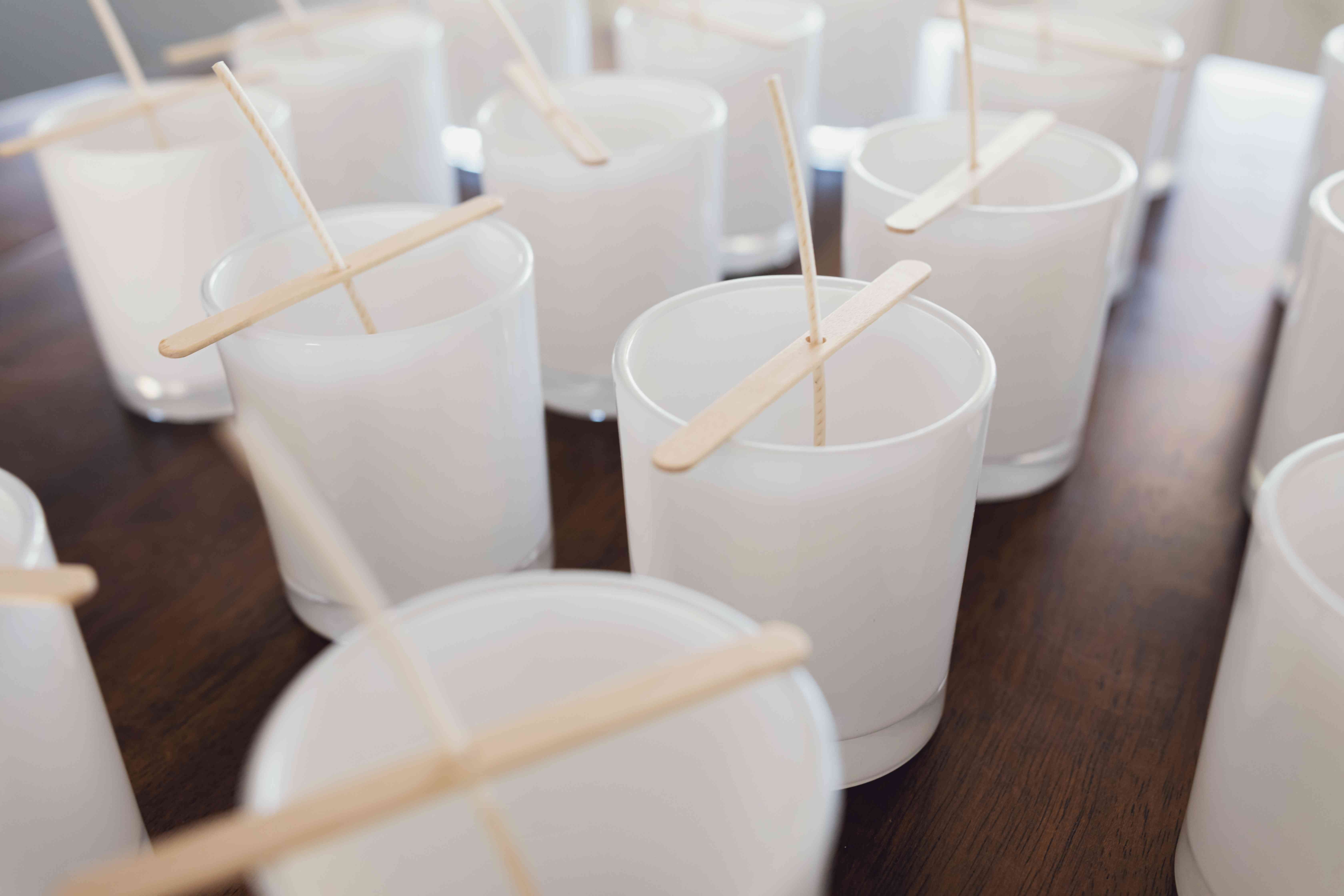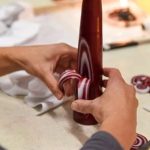In the 18th century, pillar beeswax candles were a staple in households, often serving as both a practical source of light and a symbol of wealth and status. The art of making these candles was highly revered, with skilled artisans creating intricate and elegant designs. This article delves into the history, significance, materials, process, and cultural impact of 18th century pillar beeswax candle making.
During the 18th century, beeswax candles held immense value due to their clean and bright flame, pleasant aroma, and long burn time. They were commonly used in churches, palaces, and affluent homes as a display of luxury and opulence. Understanding the historical context and significance of these candles provides insight into the craftsmanship and artistry that went into their creation.
The process of making pillar beeswax candles in the 18th century required specific materials such as beeswax, wicks, molds, and tools like ladles and melting pots. Artisans meticulously followed a step-by-step procedure to produce these candles, resulting in beautiful works that adorned various spaces. Additionally, the art of decorating beeswax candles allowed for personalized touches that added to their allure.
History and Significance of Beeswax Candles in the 18th Century
Beeswax candles have a rich history and great significance in the 18th century. During this time, beeswax was considered a valuable commodity and thus, beeswax candles were often reserved for use in churches, royal courts, and the homes of the wealthy.
The 18th century saw an increase in the popularity of beeswax candles due to their clean and long-burning properties, as well as their pleasant aroma when lit. Beeswax was also more readily available during this time period due to the growing popularity of beekeeping.
One of the main reasons why beeswax candles were highly prized in the 18th century was their role in religious ceremonies. Churches used beeswax candles for important occasions such as Easter and Christmas as a symbol of purity and light. The use of beeswax candles in churches contributed to their status as a luxury item, leading to their increased demand among the aristocracy and affluent households.
Additionally, beeswax candles were also significant in the 18th century due to their association with social status and wealth. The ability to afford and display beeswax candles in one’s home was seen as a sign of prosperity and sophistication. Their clean burning nature made them especially desirable for indoor use, unlike tallow or other wax alternatives that produced smoke or unpleasant odors when burned. Consequently, owning beeswax candles became a status symbol among the upper class during this era.
| Beeswax Candles Significance | 18th Century |
|---|---|
| Clean & Long-lasting Properties | Increased Popularity |
| Symbolism in Religious Ceremonies | Luxury Item Status |
| Social Status & Wealth Association | Status Symbol Among Upper Class |
Materials and Tools Needed for Making Beeswax Candles in the 18th Century
Beeswax candle making in the 18th century required specific materials and tools to produce high-quality, long-lasting candles. Craftsmen and women took great care in selecting the finest ingredients and tools to create their beeswax candles, which were highly valued during this time period.
Materials
The primary material needed for making beeswax candles in the 18th century was, of course, beeswax. This natural wax was obtained from beehives and was considered superior to tallow or other types of wax due to its clean-burning properties and pleasant scent. In addition to beeswax, wicks made of cotton or linen were essential for the candle-making process. These wicks needed to be of a high quality to ensure an even burn and steady flame.
Tools
Craftspeople also relied on specific tools to create pillar beeswax candles during the 18th century. A double boiler was used to melt the beeswax without direct heat, preventing overheating and possible scorching of the wax. Molds for shaping the candles were another crucial tool, usually made of metal or wood and available in various sizes and shapes depending on the desired final product.
Other Materials
In addition to beeswax and wicks, artisans would often add essential oils such as lavender or rosemary for fragrance, as well as natural dyes for coloring. These additional materials allowed for creativity when crafting unique pillar beeswax candles that were both functional and aesthetically pleasing. The meticulous selection of these materials and tools contributed to the high quality of 18th century pillar beeswax candles that were cherished in households during that time period.
Step-by-Step Process of 18th Century Beeswax Candle Making
Beeswax candles have been made and used for centuries, including during the 18th century. The process of making these candles was labor-intensive but resulted in high-quality, long-burning candles that were highly valued during this time period. Here’s a step-by-step look at how people in the 18th century would have made beeswax candles:
1. Harvesting beeswax: In the 18th century, beekeepers would collect beeswax from beehives by scraping it from honeycomb frames. This beeswax would then be cleaned and rendered to remove impurities.
2. Preparing wicks: Wicks for beeswax candles were commonly made from twisted cotton or flax fibers. These wicks would need to be straightened and properly sized for the desired candle size.
3. Melting and molding: Once the beeswax was cleaned and rendered, it would be melted down in a large cauldron or pot over a fire. The melted wax would then be poured into molds to create the desired shape of the candle.
4. Cooling and trimming: After pouring the wax into molds, it needed to cool and harden before it could be removed from the mold. Once removed, excess wax would be trimmed from the top of the candle, creating a smooth, even surface.
5. Finishing touches: Finally, the finished candles could be polished by hand to achieve a glossy finish.
The result of this intricate process was beautiful pillar beeswax candles that provided a warm and steady light source for households in the 18th century. These handcrafted candles played an important role in lighting homes, churches, and other spaces during an era when electricity was not yet available.
The Role of Pillar Candles in 18th Century Households
In 18th century households, pillar candles played a significant role in both practical and decorative aspects of daily life. These candles were essential for providing light in the evenings and during activities such as reading, dining, and social gatherings. The use of beeswax for making these pillar candles was particularly important due to its clean-burning properties and pleasant aroma, making it the preferred choice for the upper class.
Pillar candles also served as symbols of status and wealth in 18th century households. The size and number of candles used often reflected the social standing of the family, with larger and more elaborate candles being used by the wealthy. This led to an increased demand for finely crafted beeswax pillar candles, which were often sculpted or decorated with intricate designs to showcase the artistry of candle makers.
The practicality of pillar candles extended beyond just providing light, as they were also used for marking time. In an era without electricity or accurate timekeeping devices, burning candles provided a simple way to measure hours and minutes. Some households even had special candle holders designed to indicate specific increments of time based on how much of the candle had burned. Therefore, pillar beeswax candles not only illuminated 18th century homes but also served as functional timekeeping tools.
| Aspect | Description |
|---|---|
| Practical use | Pillar candles provided essential lighting in 18th century households during activities such as reading and social gatherings. |
| Symbols of status | The size and design of beeswax pillar candles reflected the social standing of families, with larger and more ornate ones being used by the wealthy. |
| Timekeeping role | Pillar candles were used as a simple method for measuring time in an era without modern timekeeping devices. |
The Art and Craft of Decorating 18th Century Pillar Beeswax Candles
In the 18th century, pillar beeswax candles were not only utilitarian items but also works of art. Decorating these candles was a popular practice that showcased creativity and skilled craftsmanship. The intricate designs and patterns on these candles added an elegant touch to households and were often used for special occasions and religious ceremonies.
Decorative Techniques
One of the most common decorative techniques for 18th century pillar beeswax candles was the use of molds. These molds were intricately designed with various patterns such as flowers, leaves, and geometric shapes. The beeswax would be carefully poured into the molds, creating beautiful and detailed designs on the surface of the candles. Additionally, artisans would use engraved metal stamps to create unique patterns and images on the candles.
Coloring
Another aspect of decorating pillar beeswax candles in the 18th century was the use of natural dyes to add color to the wax. Artisans would use dyes made from plants, flowers, and even insects to achieve vibrant hues on the candles. This added another layer of artistry to the candle-making process, as different colors could convey specific meanings or be used to match a particular theme or occasion.
Symbolism and Meaning
The decorations on 18th century pillar beeswax candles often held symbolic meaning. For example, certain floral patterns may have conveyed messages of love or prosperity, while religious symbols were commonly incorporated into candles used for church services or rituals. These decorative elements added depth and significance to the candles beyond their practical use as sources of light.
The art and craft of decorating 18th century pillar beeswax candles played a significant role in adding beauty and meaning to these household items, making them an integral part of daily life in that era’s society.
The Decline of Beeswax Candle Making in the 19th Century
During the 18th century, beeswax candles were highly prized for their clean and slow-burning qualities. However, with the Industrial Revolution came the mass production of paraffin wax and stearin candles. These new products were more affordable to produce and purchase, leading to a decline in demand for beeswax candles. Additionally, the invention of kerosene lamps and eventually electric lighting further contributed to the decrease in beeswax candle making.
As the 19th century progressed, traditional craftsmanship also began to give way to mechanization. The handcrafted process of making beeswax candles could not compete with the speed and efficiency of automated production methods. This shift led to a decline in the artistry and cultural significance of beeswax candle making.
Despite its decline during the 19th century, the art of crafting beeswax candles has experienced a modern-day revival. In recent years, there has been a growing interest in traditional artisanal techniques and sustainable practices. As a result, some artisans have sought to preserve and revive the craftsmanship involved in 18th century pillar beeswax candle making, catering to those who appreciate its historical value and unique qualities.
- This resurgence has brought attention back to the historical significance of beeswax candles from centuries past.
- The increased awareness of sustainability has also contributed to this renewed interest in traditional methods.
- Artisans are now utilizing 18th century techniques while incorporating modern twists in order to appeal to contemporary consumers’ tastes.
Modern-Day Revival of 18th Century Pillar Beeswax Candle Making Techniques
In conclusion, the art of making 18th century pillar beeswax candles is not only a historical craft but also a reflection of the significance of beeswax candles in the past. The use of beeswax candles in the 18th century was not only practical but also symbolized wealth and luxury. The process of making these candles required specific materials and tools, and the step-by-step process was a meticulous and time-consuming craft.
Despite the decline of beeswax candle making in the 19th century due to the introduction of cheaper alternatives, there has been a modern-day revival of 18th century pillar beeswax candle making techniques. This resurgence is due to the appreciation for traditional crafts and a desire for high-quality, natural products. Artisans are now rediscovering and embracing the historical methods of creating these beautiful and luxurious pillar candles.
The role of pillar candles in 18th century households cannot be understated, as they provided both light and beauty to homes. Furthermore, decorating these candles was also a form of art that added to their significance. By understanding the history and significance of beeswax candles in the 18th century, we can appreciate their value even today as they continue to make a comeback in modern craftsmanship.
Frequently Asked Questions
How Did They Make Candles in the 18th Century?
In the 18th century, candles were typically made by repeatedly dipping wicks into melted tallow or beeswax until the desired thickness was achieved. Once cooled and solidified, they would be ready for use.
Can You Make Pillar Candles With Beeswax?
Yes, pillar candles can be made with beeswax. Beeswax is a popular choice for making these types of candles because it is natural, has a pleasant aroma, and burns cleanly without producing soot.
What Was Candle Wax Made of in the 1800s?
In the 1800s, candle wax was primarily made from tallow, which is a form of animal fat. This tallow would be melted down and then formed into candles for lighting and illumination in homes and businesses during that time period.

Welcome to my candle making blog! In this blog, I will be sharing my tips and tricks for making candles. I will also be sharing some of my favorite recipes.





